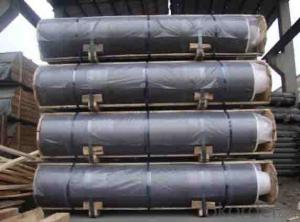When it comes to the world of metallurgy and foundries, there’s one material that stands out as a key player – graphite electrodes. These cylindrical wonders are the unsung heroes in the production of various metals, including steel. But what exactly makes them tick? What are the specifications that define their performance and quality? Let’s dive into the fascinating realm of graphite electrode specifications and uncover the secrets behind these essential components in the metallurgical industry.
First things first, let’s talk about the raw material. Graphite electrodes are made from petroleum coke and needle coke, which are derived from crude oil. These two types of coke have different properties, and their blend determines the electrode’s strength and conductivity. Petroleum coke is known for its high carbon content, while needle coke is prized for its unique structure that contributes to the electrode’s strength.
Next up, we have the binder. The binder plays a crucial role in holding the electrode together. It’s like the glue that keeps everything in place. Commonly used binders include coal tar pitch, which is derived from the distillation of coal. This pitch not only binds the electrode but also enhances its electrical conductivity.
Now, let’s move on to the manufacturing process. The production of graphite electrodes involves several steps, including mixing, pressing, baking, impregnation, and graphitization. Each step is meticulously designed to ensure the electrode’s quality and performance. The mixing stage combines the coke and binder to create a homogeneous mixture. Pressing follows, where the mixture is compacted into its cylindrical shape. Baking hardens the electrode, while impregnation seals any remaining pores. Finally, graphitization transforms the material into its final, high-temperature resistant form.
One of the most important aspects of graphite electrode specifications is their diameter. The diameter can range from a few millimeters to over 700 millimeters, depending on the application. Smaller electrodes are used for laboratory purposes, while larger ones are essential for industrial-scale metal production. The diameter directly impacts the electrode’s current-carrying capacity and heat dissipation.
Another critical specification is the electrode’s density. A higher density means better heat dissipation and less chance of breaking during the electric arc furnace process. Density is influenced by the quality of the raw materials and the manufacturing process.
Let’s not forget about the ash content. Ash content refers to the non-carbon materials present in the electrode. A lower ash content is desirable, as it reduces the risk of contamination in the metal being produced. High-quality graphite electrodes typically have an ash content of less than 1%.
The ultimate tensile strength is another key factor to consider. This property measures the maximum stress the electrode can withstand before breaking. Stronger electrodes are more resistant to wear and can last longer in the harsh environment of a furnace.
Now, let’s talk about the real-world applications of graphite electrodes. They are primarily used in electric arc furnaces for the production of steel and other metals. The electrodes conduct electricity, generating an electric arc that melts the metal. This process is not only energy-efficient but also allows for precise control over the metal’s composition.
But what about the future? With the growing demand for steel and other metals, the need for high-quality graphite electrodes is on the rise. Innovations in the manufacturing process and material science are continually pushing the boundaries of what’s possible. From improved conductivity to enhanced strength, the future of graphite electrodes looks bright.
In conclusion, graphite electrodes are an essential component in the metallurgical industry. Their specifications, such as raw materials, binder, manufacturing process, diameter, density, ash content, and ultimate tensile strength, all play a vital role in their performance and quality. As the demand for metals continues to grow, so does the importance of understanding and optimizing these specifications. So, the next time you see a steel beam or a metal structure, remember the humble graphite electrode that made it all possible.

